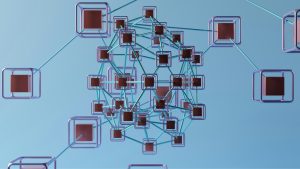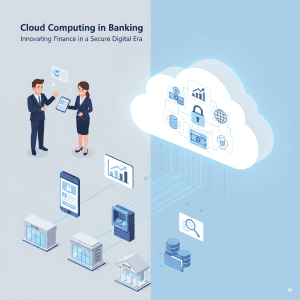Introduction
The construction industry in 2025 stands at the cusp of a revolution powered by digital transformation. With increasing project complexity, rising costs, and growing demands for sustainability and safety, traditional practices are rapidly evolving to embrace technology-driven solutions. From artificial intelligence to IoT, robotics to digital twins, these innovations are reshaping how construction projects are planned, managed, and delivered. For construction firms, understanding these advancements is no longer optional but essential to remain competitive in a dynamic market.
Digital transformation is no longer a future concept but a present-day reality. By integrating cutting-edge technologies, construction companies can streamline operations, minimize errors, increase safety, and boost profitability. This blog explores the technologies driving change, key benefits, real-world use cases, emerging trends, and the challenges construction leaders must address.
Key Technologies Driving Digital Transformation in Construction
Artificial Intelligence (AI) & Generative AI
- Automates design generation, compliance checks, and risk assessments.
- Enhances project scheduling, resource allocation, and predictive maintenance.
- Generative AI can explore multiple design alternatives, reducing design cycle times and optimizing project outcomes.
Internet of Things (IoT)
- Enables real-time tracking of equipment, materials, and environmental conditions.
- Connected wearables and smart helmets improve worker safety by detecting hazards instantly.
- Sensors embedded in infrastructure provide continuous monitoring, predicting maintenance needs.
Building Information Modeling (BIM)
- Provides a collaborative 3D digital model that integrates design, planning, and execution.
- Reduces errors and rework by ensuring all stakeholders work on a shared platform.
- Supports sustainability by simulating energy efficiency and material optimization.
Robotics and Automation
- Performs repetitive, labor-intensive, and dangerous tasks such as bricklaying, welding, and concrete pouring.
- Enhances efficiency, reduces project timelines, and minimizes risks of human error.
Construction Drones and Digital Twins
- Drones enable accurate site mapping, real-time aerial monitoring, and faster inspections.
- Digital twins create virtual replicas of construction projects, enabling predictive analysis and operational simulations.
Modular and Additive Manufacturing
- Prefabrication and 3D printing accelerate project delivery, reduce material waste, and improve quality.
- Encourages sustainability by enabling eco-friendly materials and reducing on-site disruptions.
Cloud Computing and Mobile-First Tools
- Cloud platforms facilitate real-time data sharing across teams, improving collaboration.
- Mobile apps allow on-site teams to access blueprints, update progress, and capture data—even in remote areas.
Major Benefits of Digital Transformation in Construction
- Increased Productivity: Automation and connected workflows reduce redundancy and streamline project execution.
- Enhanced Safety: AI-powered monitoring and IoT-enabled wearables minimize on-site hazards.
- Cost Reduction: Efficient scheduling, reduced waste, and optimized resources lower overall project costs.
- Improved Collaboration: BIM and cloud tools foster transparent communication across stakeholders.
- Sustainability: Digital solutions support eco-friendly practices, energy-efficient designs, and waste reduction.
- Better Decision-Making: Data-driven insights enable proactive adjustments to minimize risks and delays.
Real-World Examples and Use Cases
- Morgan Construction: Streamlined employee onboarding and administration by replacing spreadsheets with automated digital workflows, saving time and reducing errors.
- Sullivan Engineering: Adopted no-code digital tools, saving 700+ hours annually on repetitive tasks.
- John Holland: Leveraged generative AI to optimize project designs, cut costs, and increase productivity.
- Drone-enabled projects: Boosted safety and inspection efficiency with aerial mapping and real-time site data.
- AI + Digital Twins: Enabled predictive maintenance, reduced delays, and provided immersive project visualization.
Emerging Trends and Challenges in 2025
Emerging Trends
- Sustainable Construction: Net Zero Energy Buildings, recycled materials, and energy-efficient technologies.
- Labor Shortages: Accelerated adoption of automation, robotics, and employee upskilling programs.
- Supply Chain Resilience: Digital supply chain management and modular construction mitigate disruptions.
- Connected and Remote Work: Cloud and mobile-first tools enable seamless collaboration across distributed teams.
- Safety Innovations: VR training, AI hazard detection, and IoT wearables for compliance and worker protection.
Challenges
- High upfront investment in digital tools.
- Cybersecurity risks with increasing data dependency.
- Workforce resistance to change and lack of digital skills.
- Integration complexities across multiple platforms and legacy systems.
Conclusion
Digital transformation is fundamentally reshaping the construction industry, enabling companies to build faster, safer, greener, and smarter. By adopting AI, IoT, BIM, robotics, drones, and cloud solutions, firms can boost efficiency, improve collaboration, and remain sustainable in a rapidly evolving market. The companies that embrace these innovations today will future-proof their operations and secure a competitive edge for tomorrow.
Call to Action: Explore cutting-edge digital construction solutions and partner with technology leaders like TechOTD to implement AI-driven platforms, mobile apps, and automation tools tailored for construction excellence.
FAQ
Q1: What is digital transformation in construction?
It is the integration of digital technologies such as AI, IoT, BIM, and cloud computing to improve construction processes, safety, collaboration, and profitability.
Q2: How does AI benefit construction projects?
AI optimizes scheduling, predicts risks, automates compliance, and improves design accuracy, reducing delays and costs.
Q3: What is BIM and why is it important?
BIM is a 3D collaborative digital model that integrates all aspects of a project, reducing design conflicts and improving project quality.
Q4: How are drones used in construction?
Drones support aerial inspections, site mapping, and real-time monitoring, enhancing safety and efficiency.
Q5: What challenges does digital transformation address in construction?
It addresses labor shortages, safety risks, supply chain disruptions, and sustainability challenges while enhancing efficiency.
Key Points Table
| Aspect | Details |
|---|---|
| Core Technologies | AI, IoT, BIM, Robotics, Drones, Cloud, Modular Construction |
| Benefits | Productivity, Safety, Cost Savings, Collaboration, Sustainability |
| Emerging Trends | Generative AI, Digital Twins, Modular & Additive Manufacturing |
| Challenges | Labor shortages, Cybersecurity, Supply chain disruptions |
| Digitalization Priority | Automation, Mobile-first tools, Data visibility |
| Impact | Faster projects, fewer errors, improved resource management |
SEO-Friendly Keywords
construction digital transformation, AI in construction, IoT construction technology, BIM building information modeling, construction project management, cloud computing construction, generative AI construction, construction technology 2025, smart construction, construction industry innovation
Backlinks Incorporated Naturally
- Learn more about advanced AI solutions from TechOTD AI Services.
- For detailed insights on technology trends, visit TechOTD Blog.
- Discover how blockchain integration optimizes business processes in Dubai.
- Understand workflow optimization from How TechOTD Works.
- Explore the future of service excellence at Seamless Customer Journeys with AI.
- Find top tools in Best Gadgets for Programmers 2025.
- Get insights on predictive analytics at Predictive Analytics Software Development.
- Learn about technology impacts in education at Technology Impact on Education.
- Compare frameworks in React Native vs Swift.
- See TechOTD Mobile App Services for industry-specific development.











